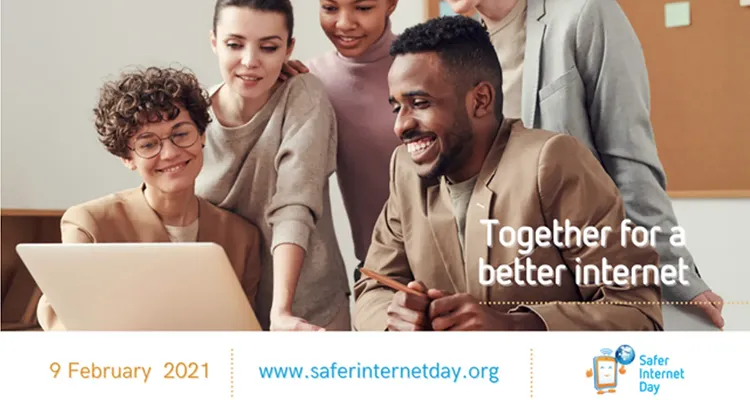Never before have we enjoyed so many opportunities to learn, exchange, participate and create. In 2021, this statement rings truer than ever.
In the past twelve months, the world has collectively taken a digital leap, and digital means of communication have proven nothing short of vital for our societies to keep functioning in the face of a global health crisis.
However, greater internet use also means greater exposure to online risks, especially for the youngest among us. Concerns pertaining to cybercrime, privacy, misinformation and disinformation, hate speech, cyberbullying, exposure to harmful content and predatory behaviours have grown since the advent of the coronavirus crisis.
As internet users, we are all faced with the same dilemma: how do we make the most of the opportunities the digital environment brings us, while at the same time mitigating any potential negative side-effect it might entail?
Safer Internet Day (SID) – organised by the Insafe/INHOPE network of European Safer Internet Centres (SICs) with the support of the European Commission* – is a global, community-led observance which provides a space for all stakeholders to reflect on how together we can promote a responsible, respectful, critical and creative use of digital technologies with the ultimate goal of fostering a better internet for all.
Having grown in scope over the years, Safer Internet Day is now celebrated by children, young people, parents and carers, teachers, educators and social workers, industry, decision-makers and politicians from over 170 countries.
Today, on Safer Internet Day 2021 – we join millions across the globe, joining forces “Together for a better internet”.
In the meantime, make sure to:
- visit www.saferinternetday.org to get an idea of how our SID committees and supporters are celebrating SID 2021, and to find a variety of resources and inspiration for your own plans.
* Safer Internet Day would not be possible without the support of the European Commission. Currently the funding is provided by the Connecting Europe Facility programme (CEF). Find out more about the EC’s “European Strategy for a Better Internet for Children” on the European Commission’s website.
